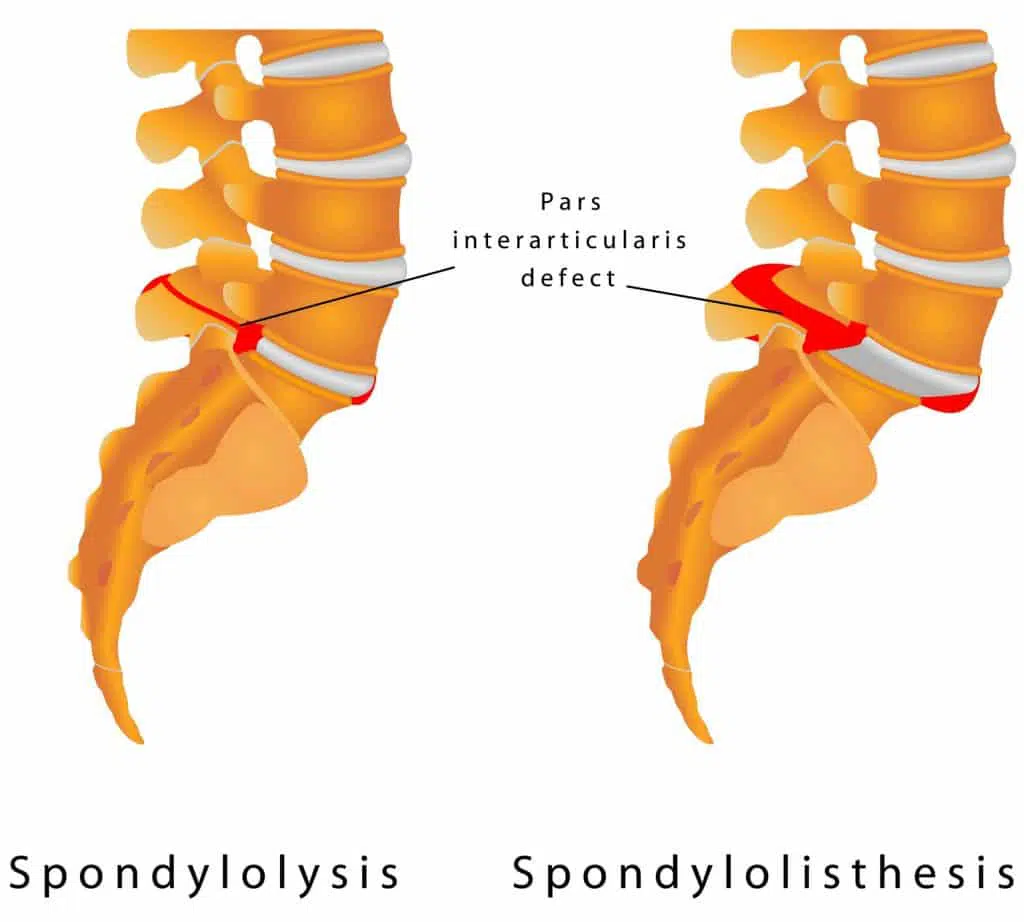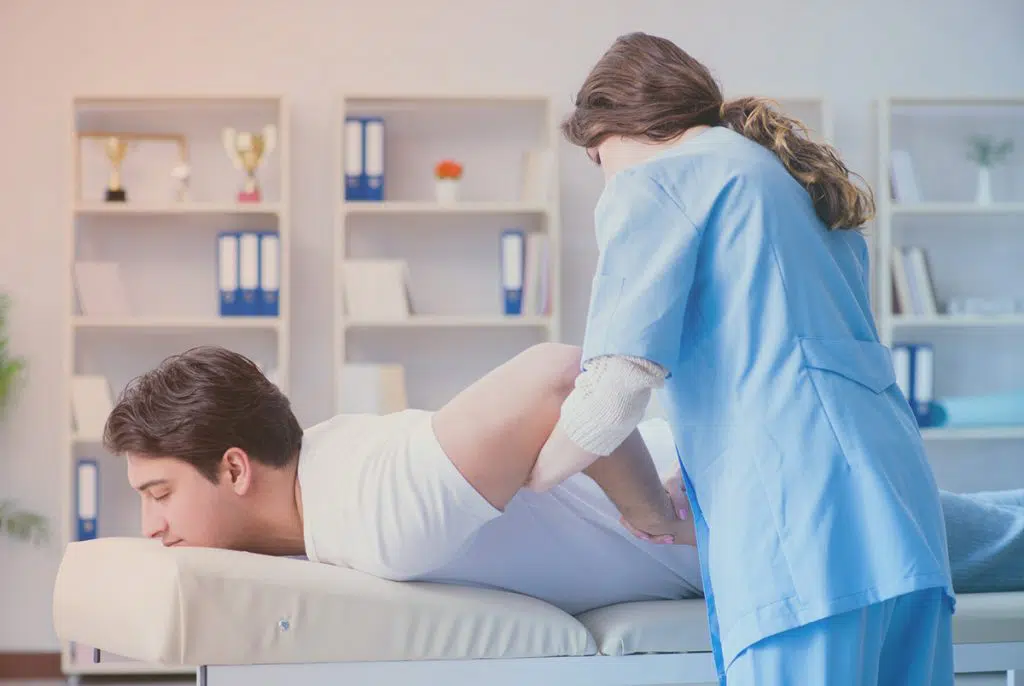Call Now!
Torrance Office: +1 (424) 360-0155

If you've recently been plagued by back pain, buttock pain, or discomfort and dysfunction in your lower extremities, you are probably desperate to figure out the cause. In your search for answers, you may have run across the words "spondylolysis" and "spondylolisthesis." No, one isn't simply an alternate spelling of the other; each term describes a separate (but related) situation in your lower spinal column. Our Torrance spondylolisthesis doctor here at Rolling Hills Medical is more than happy to clear up your confusion -- and to ease your symptoms through a variety of healing techniques. Let's look at these two terms, what they can mean for your quality of life, and how our treatment center can help.
Spondylolysis is a condition that affects one particular area of the spine called the pars interarticularis. This bony structure connects to the facet joints (the joints that allow your spine to flex) of the 4th and 5th lumbar vertebrae. When the pars interarticularis undergoes excessive stress, a stress fracture can appear at either of these points. The resulting spinal instability is called spondylolysis.
Some people are naturally vulnerable to spondylolysis, while others develop it as a result of strenuous athletic or work activities. Some cases develop in association with degenerative disc disease or facet joint damage. Spondylolysis can occur on one side of the spine, or it can afflict both sides.
Spondylolisthesis is a direct consequence of spondylolysis. The instability caused by the crack in the pars interarticularis allows the affected vertebra to shift position. This vertebra starts slipping forward relative to the vertebra beneath it, altering your lumbar/sacral spinal alignment. If less than 50 percent of vertebra has slipped over the one beneath it, we classify it as low-grade spondylolisthesis. A slippage of more than 50 percent is considered high-grade spondylolisthesis.
Spondylolisthesis doesn't necessarily cause symptoms -- but when it does, those symptoms can be extremely annoying. Sufferers may experience low back pain, buttock pain, and occasionally leg or foot pain and numbness. These symptoms can easily be mistaken for sciatica or a herniated disc. Your best bet is to schedule a thorough evaluation by our Torrance spondylolisthesis doctor to confirm the condition's presence (or identify another cause that we can also treat).

If spondylolysis or spondylolisthesis is causing you discomfort, there are several conservative treatment techniques that may offer relief. At this stage, your Torrance spondylolisthesis treatment plan may include: Ice or heat therapy to tame inflammation
The next step up the treatment ladder may involve anti-inflammatory injections. We can deliver steroids and analgesic drugs directly to the afflicted part of the spine for long-lasting relief. A related technique called radio frequency ablation can help to extend this relief even further.
In the most stubborn or extreme cases of spondylolisthesis, we may recommend minimally-invasive spinal fusion surgery. Our methods of fusing vertebral structures require less recovery time than open surgical procedures. You may even benefit from regenerative medicine techniques that help damaged tissues rebuild themselves and function more normally.
Your spine may be a complex, sometimes confusing structure, but Rolling Hills Medical knows how to get it working again. Call us at 424-250-8699 if you're in need of Torrance spondylolysis treatment. We want to help!
